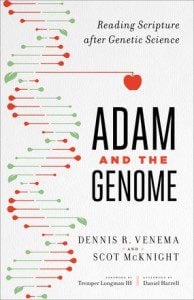 Story of the week, from Chicago Tribune:
Story of the week, from Chicago Tribune:
A magical moment was caught on camera when Santa Claus comforted a child with autism who was worried his disability would put him on the “naughty list.” A photo shows the Santa at the RiverTown Crossings mall with his arm around the 6-year-old boy as the child leans against him. “It’s OK to be yourself,” the Santa told him, according to the boy’s mother, Naomi Johnson. “Amazing experience,” she later posted on the mall’s Facebook page, along with the photo. The mall is south of Grand Rapids. Johnson said her son Landon went back to the Santa after seeing him with his cousins and told him “sometimes he gets in trouble at school and it’s hard for people to understand that he has autism and that he’s not a naughty boy.” The Santa told the boy not to worry and that he has been “a very good boy being who he is.” “They sat and chatted for at least five minutes. Santa paid close attention and listened to him,” Johnson said. “He opened up to this person about who he was and he was accepted. He wasn’t a science experiment, like he gets treated when most people find out he’s autistic. He was Landon, sitting with Santa and being told that it was OK to be himself.”
Second story of the week, from CBS Sports:
From reading to reuniting with Otzelberger, Thomas has regained his slightly shaken confidence and wants badly to beat Iowa, his mom’s favorite team growing up.
“Basketball is so much about confidence,” Thomas said. “And playing in a role in which sometimes the first time you touch the ball is the most open you will be and your job is to shoot it and make it, you need great confidence. I’m in a good place now. And if we can just keep everyone bought in on our common goal, I think we have something special here.”
When you put yourself in Matt Thomas’ life for five minutes and see who he has become, you realize that he already has something special.
A good story about the home and learning about failure, by Jennifer Kuhel.
Utah’s homelessness story — great news!
A decade ago, Utah set itself an ambitious goal: end chronic homelessness.
As of 2015, the state can just about declare victory: The population of chronically homeless people has dropped by 91 percent.
The state’s success story has generated headlines around the country, and even The Daily Show With Jon Stewart looked to Utah to understand how the state achieved its goal.
In fact, Utah still has a substantial homeless problem. The overall homeless population is around 14,000.
The chronically homeless, on the other hand, are a subset of the homeless population that is often the most vulnerable. These are people who have been living on the streets for more than a year, or four times in the past three years, and who have a “disabling condition” that might include serious mental illness, an addiction or a physical disability or illness.
According to the Department of Housing and Urban Development, that represents about 20 percent of the national homeless population.
By implementing a model known as Housing First, Utah has reduced that number from nearly 2,000 people in 2005, to fewer than 200 now.
Carl Trueman in his sweet spot, on the crisis among conservative evangelicals:
First, far too much power is exerted by wealthy and influential parachurch organizations. A good example of this was provided this year by events surrounding the attempted exchange about Evangelicals and Catholics Together which was commissioned by Reformation21, the e-zine of the Alliance of Confessing Evangelicals. Three of us were involved: Timothy George, Thomas Guarino, and myself. The exchange was respectful, honest, friendly, but frank. My own article was scarcely a paean of praise to the ECT process.
Within hours of the first article (that of Tim) being published, a tweet and a hostile blog post by a senior representative of another Reformed parachurch group based in Florida, followed by rumored behind-the-scenes shenanigans, were enough to get the series pulled (and then thankfully picked up by First Things—kudos to Rusty Reno). Sad to say, one parachurch group had effectively closed down perfectly legitimate discussion in an unconnected forum by sheer bully-boy tactics….
The second problem for much of conservative Protestantism is a related one, highlighted by Roger Scruton. Scruton has rightfully stated that it is “surely impossible to flee from kitsch by taking refuge in religion, when religion itself is kitsch.” (The Intelligent Person’s Guide to Modern Culture, p. 92). There is indeed an unbearable, kitschy lightness to so much that passes for conservative Protestant life and thought….
Finally, conservative Protestantism lacks a strong tradition of social thought which might help it counter the kitsch and engage with the many challenges that are being cast its way by contemporary society.
Drawing insights from psychology, sociology, biology, and (mainly Jewish) theology, Sacks– himself a deeply religious man–understands well the maxim made famous by Aleksandr Solzhenitsyn that the line dividing good and evil does not run between groups but through every human heart. Still, the tendency to hive off into groups and define one’s group against others constitutes the heart of the matter and disposes us not only to great evil but to great good. And this is the rub. Or, as Sacks puts it: “what is best in us and what is worst both come from the same source: our tendency to form ourselves into groups [and] to think highly of our own and negatively of others.”
Most would recognize this as all-too-human tendency but know, too, that groups can inspire and enable our better angels. The path to violence takes shape when three additional items are added. First, group formation must occur around our deepest convictions, which are often religious or metaphysical in nature; Sacks employs a line from Pascal to underscore this point: “Men never do evil so completely and cheerfully as when they do so from religious conviction.” Second, one has to experience or at least be persuaded that the “other group” has committed grave wrongdoing against your group—your family, your clan, your religion. Finally, you need unscrupulous leaders to enflame a pervasive, righteous feeling of victimhood, enabling one to see the “other group” as utterly despicable, subhuman, malevolent.
[HT: JS]
There was a time when Visitacion Valley middle school in San Francisco could have featured in a gritty US crime drama. Surrounded by drugs and gang violence, the kids were stressed out and agitated. One day children came in to find three dead bodies dumped in the schoolyard. “In 2006 there were 38 killings in our neighbourhood,” says Barry O’Driscoll, the school’s head of physical education (PE). He says the lives of students were infected by violence in the community, and several fights would break out every day. In 2007 a meditation programme called Quiet Time was brought in to meet some of these challenges. “When I first heard about it I thought it probably wasn’t going to work,” says O’Driscoll. “We get thrown a new thing every couple of years so I didn’t put too much faith in it.” But in April, just a month after meditation began, teachers noticed changes in behaviour. “Students seemed happy,” says O’Driscoll. “They worked harder, paid more attention, were easier to teach and the number of fights fell dramatically.” In the first year of Quiet Time suspensions at Visitacion Valley – which has 500 students aged 11-13 – were reduced by 45% (pdf). By 2009-10, attendance rates were over 98% (some of the highest in the city), and today 20% of graduates are admitted to the highly academic Lowell high school – before it was rare for even one student to be accepted. Perhaps even more remarkable, last year’s California Healthy Kids Survey from the state’s education department found that students at Visitacion Valley middle school were the happiest in the whole of San Francisco.
Good for parents of teenagers to know.
Let it snow? Water treatment plant lake effect snow:
Early Monday morning, a teeny, tiny band of “lake” effect snow set up over central Pennsylvania. Except the warm, moist air from which this snow band was generated wasn’t a lake — it was from a waste water treatment plant.
Lake effect snow forms when very cold air blows over a relatively warm body of water. The moisture from the lake evaporates into the air which rises to form clouds and eventually leads to snow downwind. Some of the biggest snow totals on record east of the Rockies are in lake effect snow zones. And, as illustrated by this interesting case, it doesn’t take much to trigger the process, and it doesn’t matter what the body of water is.
Maria Elena Grimmett was 11 when she noticed that her family’s well water was tinged brown, and she wondered why.
Her curiosity sparked a six-year investigation into a new way to solve a common water pollution problem, and on Tuesday, that inquiry — conducted largely at Grimmett’s dining room table — won her a prestigious prize for young researchers and a $100,000 college scholarship.
“Oh my goodness. I can’t tell you how shocked I was,” Grimmett, now 17, said outside an auditorium at George Washington University, which hosted the final round of the 2015 Siemens Competition in Math, Science and Technology.
Grimmett’s initial questions about the color of her family’s water led her to learn about pharmaceutical pollution in the Florida Everglades. She was disgusted, and she wanted to help solve the problem. “I couldn’t imagine how people were letting this happen,” she said.
So she settled on figuring out a new way to remove sulfamethazine, a common veterinary antibiotic used in pigs and cows, from water. Sulfamethazine contamination is common in rural areas, she said, and is helping to create antibiotic-resistant bacteria that are a serious threat to public health.
Grimmett experimented with a resin called MN250, which she said are “basically tiny plastic beads.” The beads are chemically sticky, attracting the antibiotics and pulling them out of the water. Grimmett has experimented to see under what conditions the beads work best. “With all the charts and graphs I’ve made, water engineers can design systems” to treat drinking water at scale, she said.
Burnout among U.S. doctors is getting worse, according to a study that shows physicians are worse off today than just three years earlier.Mayo Clinic researchers, working with the American Medical Association, compared data from 2014 to measures they collected in 2011 and found higher measures on the classic signs of professional burnout. More than half of physicians felt emotionally exhausted and ineffective. More than half also said that work was less meaningful.The data dovetail with a recent JAMA study, which found much greater prevalence of depression among doctors in training than in the general population. Taken together, experts say the problems require solutions that offer a systemic approach. All health care organizations have a shared responsibility to address the situation, they add. “What we found is that more physicians in almost every specialty are feeling this way and that’s not good for them, their families, the medical profession or patients,” said Tait Shanafelt, an author of the Mayo study and director of the clinic’s Department of Medicine Program on Physician Well-being. The study was published in Mayo Clinic Proceedings.
Zanthe Taylor on fitbits, children, families, and eating disorders:
Encouraging fitness and strength has value, but it is challenging to separate those goals from accompanying issues of weight and body shape. Genes are powerful in determining body shape, and adolescents are also going through extreme body changes. Encouraging impressionable kids to consider exercise a “calories in, calories out” activity that can alter their body type is unrealistic and unfair, and the Fitbit plays into that simplistic and inaccurate model. For the child with a predisposition toward over-exercise and eating disorders, this could be a trigger for developing a disorder.
No caring parent would give a child a Fitbit with a malicious motive. But not only might it encourage eating disorders, it also seems simultaneously over-intrusive and detached.
You’re likely still telling yourself that a fitness tracking device is a good idea for your child — the conventional wisdom that exercise is a panacea for body dissatisfaction is strong. But if you really identify a need for more physical activity in your child’s life, try modeling that behavior yourself, or doing more physical activities together as a family. Make exercise about fun and health, not weight loss. Identifying activities your child enjoys rather than relying on a tally of steps taken or distance covered makes building lifelong habits more likely.
Build physical activity into your family’s lifestyle, by all means, but do it the old-fashioned way, and better yet, do it together.















